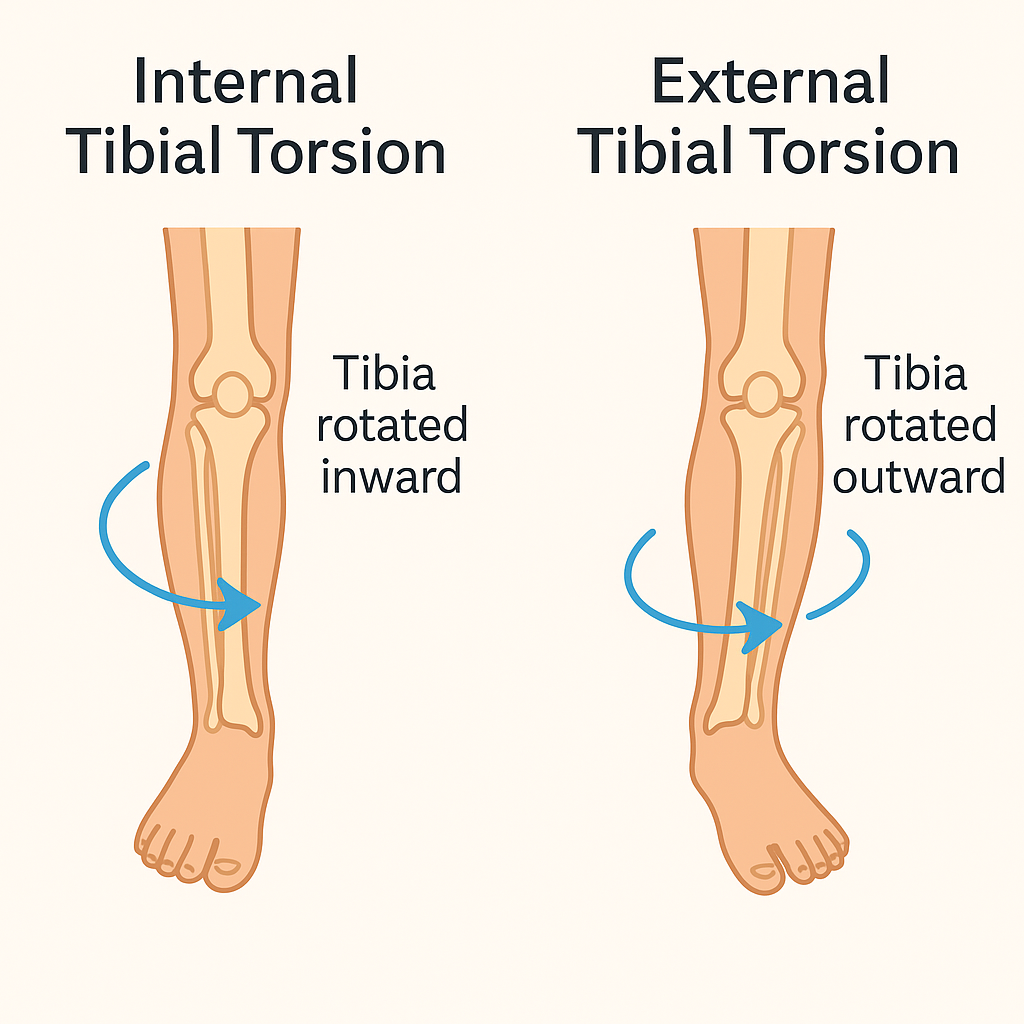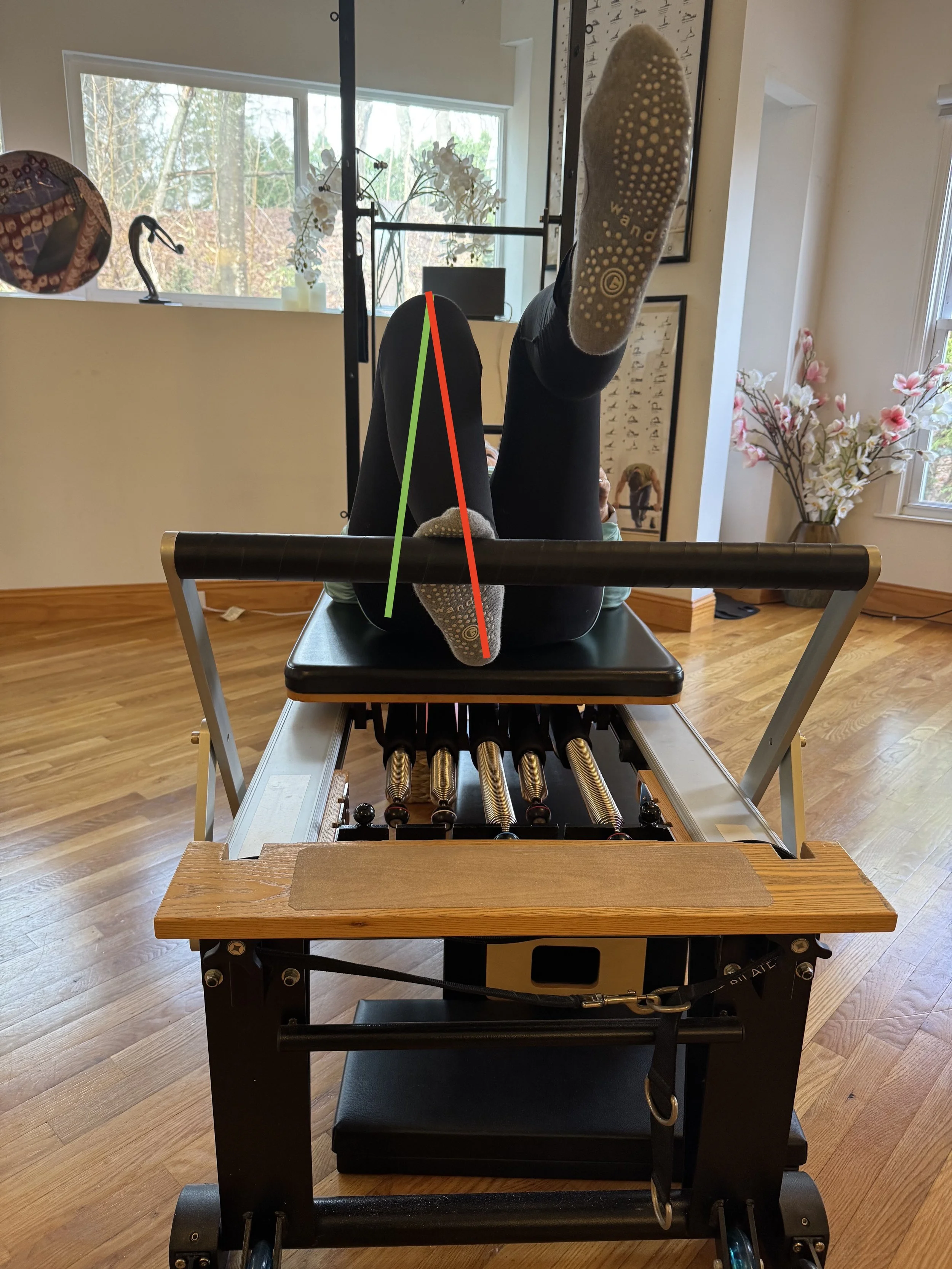Tibial Torsion and Pilates
Realigning from the Ground Up
Have you ever looked down during a Pilates class and noticed your knees point in a different direction than your feet? Or maybe your instructor cued you to track your knees over your toes during footwork or squats, and it felt… off?
You may be experiencing something called tibial torsion—a common and often misunderstood lower-body alignment issue that can impact posture, movement efficiency, and even joint health.
But don’t worry—Pilates is one of the best practices for improving awareness and function in the lower limbs. Let’s break it down and explore what you can do to realign from the ground up.
What Is Tibial Torsion?
Tibial torsion refers to a twisting of the tibia, or shin bone, along its long axis. In simple terms, it’s when your knee faces one direction and your foot points another.
There are two primary types:
External tibial torsion – when the foot rotates outward relative to the knee
Internal tibial torsion – when the foot rotates inward relative to the knee
A small degree of tibial rotation is normal and even necessary for functional gait. But excessive torsion—often a leftover from how the bones developed during childhood—can affect how force travels through your leg, creating compensation patterns and strain at the ankles, knees, hips, or lower back.
Why Does It Matter in Pilates?
In Pilates, alignment is everything.
Many Pilates exercises, especially on the Reformer, require you to track your knees over your toes, engage your feet evenly, and work symmetrically. If your tibia is misaligned, you might:
Feel strain in the knees or ankles
Struggle to find proper hip-knee-foot alignment
Overuse one part of the foot or underuse another
Have difficulty activating the glutes or inner thighs effectively
Luckily, Pilates is built to address these issues—through balanced muscle development, neuromuscular re-education, and deliberate alignment cues.
Pilates Exercises That Support Tibial Alignment
Here are a few Pilates-based exercises and concepts that can support better tibial organization over time:
1. Footwork on the Reformer (with Alignment Focus)
Use this foundational exercise to assess how your knees track. Use a mirror or ask your instructor to watch from above.
Tips:
Start in parallel on the heels or balls of the feet
Actively spread the toes and center weight across the tripod of the foot
Visualize your shin bones rotating slightly inward (if externally rotated) or outward (if internally rotated) to align the knee with the second toe
If you lift your head and watch your knees, you will see that they should track directly upwards to the ceiling, aligning the inner third of your knee cap with your second (next to the big toe) toe.
2. Standing Foot & Ankle Work (e.g., Standing Splits or Wall Sits)
Weight-bearing while standing helps retrain lower limb alignment in real-world positions.
Tips:
Maintain a soft knee bend to feel tibial rotation without locking the joint
Practice slight inward or outward spiraling of the tibia while keeping the foot rooted
Use the mirror or tactile feedback to align knees and feet
3. Side-Lying Leg Series on the Reformer or Mat
These exercises strengthen the glutes and hips, which help rotate the femur and stabilize the entire leg.
Tips:
Keep the pelvis neutral and knees pointing forward
Work on abducting (lifting) without letting the top leg rotate open
Engage the outer hip and inner thigh to build balance across the joint
4. Bridging with Foot Awareness on the Mat or Reformer
Bridging is excellent for activating the posterior chain—hips, hamstrings, and spinal muscles—all while grounding through the feet.
Tips:
Place your feet hip-width apart and observe their alignment
Press evenly through the balls of both big toes and outer heels
Visualize lifting the arch and spiraling the shins toward balance
5. Foot Corrector, Toe Corrector, or Theraband Work
Using small props helps retrain the subtle muscles of the foot and ankle that influence tibial position.
Tips:
Wrap a theraband around the ball of the foot and slowly flex/extend while keeping the knee stable
Practice toe spreading and gripping for intrinsic foot muscle strength
Ask your instructor for equipment-based support if you need more tactile feedback
Alignment Takes Time and Practice
Tibial torsion doesn’t change overnight—and in some cases, the bony rotation itself is structural and can’t be “fixed.” But what can change is how your muscles, joints, and nervous system organize around it.
Pilates helps you build a neutral, functional baseline that reduces compensation and improves how you move in daily life. With consistent practice, you'll start to notice:
Improved balance and knee tracking
Less strain during squats, lunges, and walking
A more confident, grounded connection through your feet
Want to Learn More?
Ask your instructor to take a look at your foot-knee alignment next time you’re in class. We love helping clients get curious about their movement patterns and build strategies for healthy alignment.
Your feet carry you through the world—let’s make sure they’re well-supported from the ground up.

